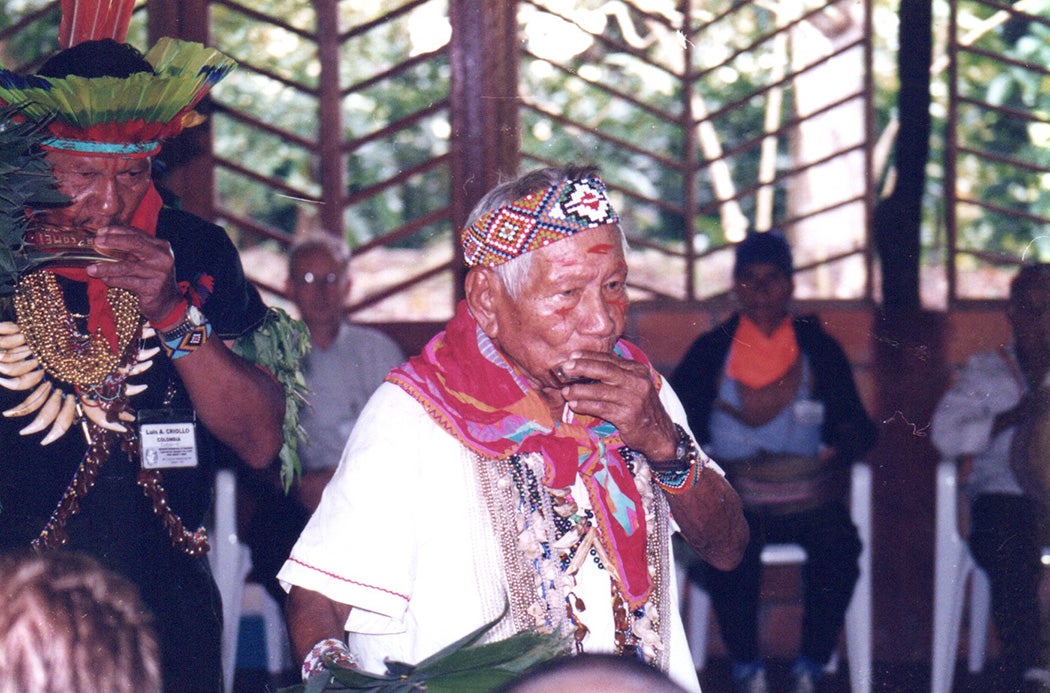If we think of an authentic shaman as a healer or priest performing rituals within a small Indigenous community, what do we make of “shamans” who tour the world, offering ceremonies with elements derived from a range of cultures to non-Indigenous people for a fee? Looking at practices in South America, from precolonial times to the present day, anthropologist Esther Jean Langdon finds tremendous diversity in the services shamans offer and the people to whom they offer them.
Well before the arrival of Spanish and Portuguese colonizers, Langdon writes, shamans from groups in the lowlands of what’s now southern Colombia, including the Siona people, traveled to highland regions to perform rituals for other communities, using a psychoactive plant medicine called yajé. The networks evolved over time and came to include mestizo and urban people.
More recently, starting in the 1980s, another network emerged linking the lowland shamans with urban professionals and members of the middle class. Practitioners in this circuit, known as taitas, may perform yagé ceremonies organized by psychologists or other European-style healers.
Langdon writes that increasing interest in these practices has helped revive shamanic practices among the Siona that had largely died out in the 1960s. The new Siona healers don’t play a formal leadership role within their communities as their predecessors did. However, they’re often engaged in a broad movement of Indigenous cultural revitalization and human rights campaigning that spans Latin America.
Meanwhile, in the Brazilian Amazon, other kinds of shamanic rituals emerged among caboclos—people of mixed Indian, European, and African backgrounds. These may involve healing plants, African-derived rhythmic music, worship of Catholic saints, and psychoactive rituals or other ecstatic techniques. It’s in this milieu that two major international ayahuasca-using religious organizations emerged: Santo Daime and União do Vegetal.
Like the Colombian rituals using the closely related yajé medicine, ayahuasca ceremonies in Brazil’s cities are often arranged by psychologists and other professionals for members of the urban middle class. These ceremonies also often borrow practices from North American Indigenous tradition, such as the use of sweat baths, sacred pipe, drumming, and sun dance. Some shamans leading the rituals identify their origins in various Indigenous communities around the Americas, and others claim no Indigenous roots at all.
Weekly Newsletter
However, the globalized ayahuasca network also includes Indigenous groups with their own traditions. Langdon points to a single community of the Guaraní people, who live along the Brazilian coast. Most Guaraní keep their culture separated from the broader Brazilian society, maintaining their own language and taking part in spiritual practices under the guidance of a shamanic practitioner known as a karai. However, one village has adopted the non-traditional use of ayahuasca as a way to access forgotten ancestral knowledge. The village welcomes outsiders to participate in the ceremony and takes part in the international Medicine Alliance and Sacred Fire umbrella organizations.
Like the Siona, the Guaraní are participants in cultural exchanges that defy any binary division between static authenticity and cosmopolitan modernity.
Support JSTOR Daily! Join our membership program on Patreon today.







